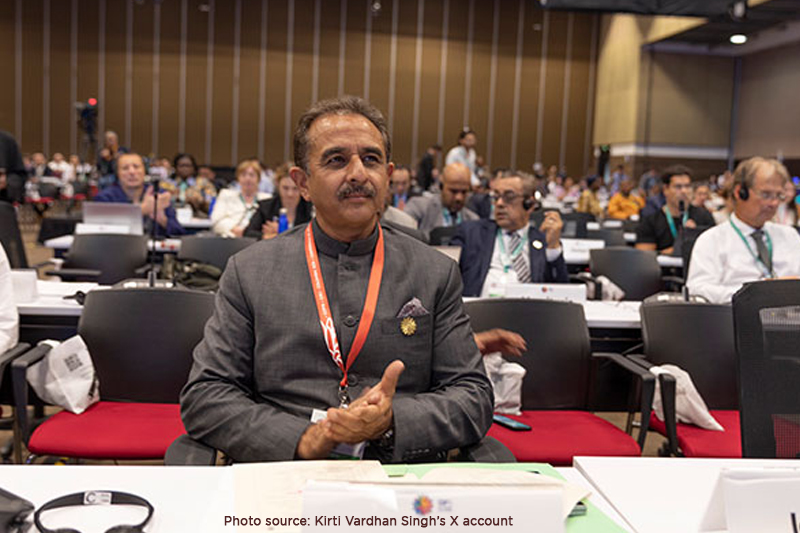 India has called for international funding to implement its updated National Biodiversity Strategy and Action Plan (NBSAP) during the UN Biodiversity Conference (COP16) in Cali. Union Minister of State for Environment, Kirti Vardhan Singh, announced the launch of the updated plan on November 31, highlighting the necessity of financial resources for its execution.
India has called for international funding to implement its updated National Biodiversity Strategy and Action Plan (NBSAP) during the UN Biodiversity Conference (COP16) in Cali. Union Minister of State for Environment, Kirti Vardhan Singh, announced the launch of the updated plan on November 31, highlighting the necessity of financial resources for its execution.
While presenting the national statement at COP16, Singh emphasized the importance of providing the means for implementation, including financial resources, to support the NBSAP. He noted that the updated plan is now aligned with the Kunming-Montreal Global Biodiversity Framework (KMGBF).
“India has adopted a ‘Whole of Government’ and ‘Whole of Society’ approach in revising the NBSAP to align with the KMGBF targets,” Singh stated. He stressed the need for accessible means of implementation, including financial resources, technology, and capacity building, to ensure effective execution.
The Convention on Biological Diversity (CBD), established in 1992, aims to conserve biodiversity, promote sustainable use, and ensure equitable sharing of genetic resources. As part of its commitments, each member country must develop a tailored NBSAP that reflects national priorities in biodiversity protection and management.
Aligning the NBSAP with the KMGBF means that India’s biodiversity strategies are designed to meet both national and international goals. The KMGBF, adopted in 2022, sets global targets to halt biodiversity loss by 2030 and emphasizes the restoration of ecosystems, protection of species, and sustainable resource use.
During his address at COP16, Singh reaffirmed India’s commitment to preserving biodiversity and promoting environmental harmony, citing the country’s cultural legacy of respecting nature. He highlighted India’s unique position as one of the world’s 17 mega-diverse nations, home to four of the 36 recognized biodiversity hotspots.
A significant focus of Singh’s speech was the launch of the nationwide tree plantation initiative, ‘Ek Ped Maa Ke Naam’ or ‘Plant4Mother,’ aimed at honoring both Mother Earth and mothers everywhere. This campaign aligns with India’s broader environmental mission, ‘Lifestyle for the Environment (LiFE),’ which encourages sustainable living globally.
Singh also noted India’s commitment to wildlife conservation through the International Big Cat Alliance (IBCA), established to protect major big cat species, which are vital indicators of healthy ecosystems and biodiversity.
Additionally, he highlighted the ‘Namami Gange’ Mission, which focuses on rejuvenating the Ganga River and has been recognized by the United Nations as one of the top 10 World Restoration Flagships. Singh also reported an increase in India’s Ramsar sites from 26 to 85 since 2014, with a goal of reaching 100, demonstrating the country’s commitment to wetland conservation.










